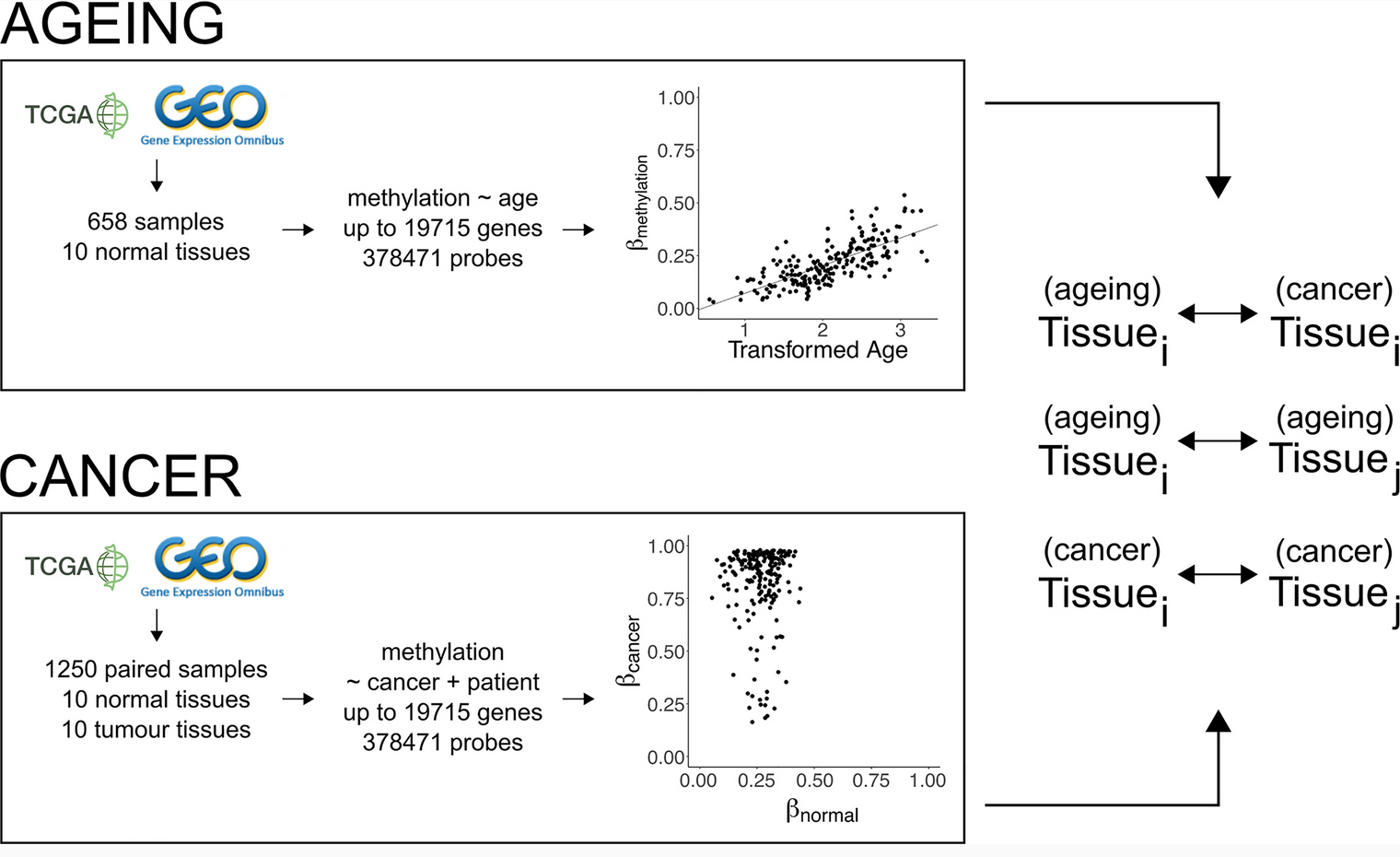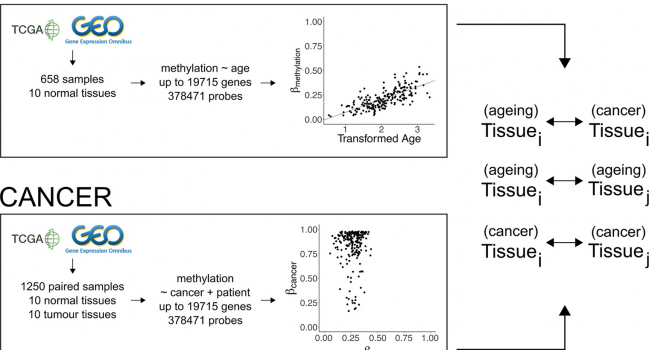Abstract:
DNA methylation is an epigenetic mechanism known to affect gene expression and aberrant DNA methylation patterns have been described in cancer. However, only a small fraction of differential methylation events target genes with a defined role in cancer, raising the question of how aberrant DNA methylation contributes to carcinogenesis. As recently a link has been suggested between methylation patterns arising in ageing and those arising in cancer, we asked which aberrations are unique to cancer and which are the product of normal ageing processes. We therefore compared the methylation patterns between ageing and cancer in multiple tissues. We observed that hypermethylation preferentially occurs in regulatory elements, while hypomethylation is associated with structural features of the chromatin. Specifically, we observed consistent hypomethylation of late-replicating, lamina-associated domains. The extent of hypomethylation was stronger in cancer, but in both ageing and cancer it was proportional to the replication timing of the region and the cell division rate of the tissue. Moreover, cancer patients who displayed more hypomethylation in late-replicating, lamina-associated domains had higher expression of cell division genes. These findings suggest that different cell division rates contribute to tissue- and cancer type-specific DNA methylation profiles.
Read the full text.

